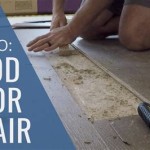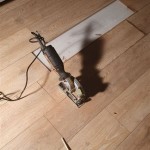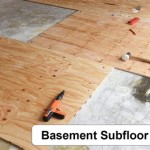DIY Rubber Flooring: The Perfect Solution for Your Home
Rubber flooring is a popular choice for homes and businesses due to its durability, comfort, and sound-absorbing properties. It is also relatively easy to install, making it a great project for DIY enthusiasts. Here are some of the essential aspects of DIY rubber flooring that you should know before you get started:
Types of Rubber Flooring
There are two main types of rubber flooring: solid rubber and rubber tiles. Solid rubber is a single sheet of rubber that is glued to the subfloor. Rubber tiles are individual tiles that are snapped together to create a seamless floor. Both types of rubber flooring are available in a variety of colors and textures.
Choosing the Right Rubber Flooring
When choosing rubber flooring for your home, you should consider the following factors:
- Thickness: The thickness of the rubber flooring will affect its durability and comfort. Thicker rubber flooring is more durable and comfortable, but it is also more expensive.
- Hardness: The hardness of the rubber flooring will affect its resistance to wear and tear. Softer rubber flooring is more comfortable to walk on, but it is also more likely to show wear and tear.
- Color and texture: Rubber flooring is available in a variety of colors and textures. Choose a color and texture that will complement the décor of your home.
Installing Rubber Flooring
Installing rubber flooring is a relatively easy process that can be completed in a few hours. The following steps will help you install rubber flooring:
- Prepare the subfloor: The subfloor should be clean, level, and dry. If the subfloor is not level, you may need to level it with a self-leveling compound.
- Lay out the rubber flooring: Lay out the rubber flooring on the subfloor and cut it to fit the room. Leave a small gap around the edges of the room for expansion.
- Glue the rubber flooring: Apply a thin layer of adhesive to the subfloor and then place the rubber flooring on top of the adhesive. Use a roller to press the rubber flooring into place.
- Seal the edges: Once the rubber flooring is installed, you should seal the edges with a sealant to prevent moisture from getting underneath the flooring.
Maintaining Rubber Flooring
Rubber flooring is relatively easy to maintain. Simply sweep or vacuum the floor regularly to remove dirt and debris. You can also mop the floor with a mild soap solution. Avoid using harsh chemicals or abrasive cleaners on rubber flooring, as these can damage the finish.
Benefits of Rubber Flooring
There are many benefits to installing rubber flooring in your home, including:
- Durability: Rubber flooring is extremely durable and can withstand heavy foot traffic.
- Comfort: Rubber flooring is comfortable to walk on and can help to reduce fatigue.
- Sound absorption: Rubber flooring absorbs sound, making it a good choice for noisy areas of your home.
- Water resistance: Rubber flooring is water resistant, making it a good choice for areas of your home that are prone to moisture.
- Easy to clean: Rubber flooring is easy to clean and maintain.
Conclusion
Rubber flooring is a great choice for homes and businesses. It is durable, comfortable, sound-absorbing, and easy to maintain. If you are looking for a new flooring option for your home, rubber flooring is definitely worth considering.

Easiest 5 Diy Flooring Solutions Learn To Install On Your Own Inc

Best Gym Floor Over Carpet For Home Staylock Tiles

Best Options To Cover A Dirt Floor

Read This First The Perfect Home Gym Flooring Cardio Coffee And Kale

Read This First The Perfect Home Gym Flooring Cardio Coffee And Kale

Best Gym Floor Over Carpet For Home Staylock Tiles

Easiest 5 Diy Flooring Solutions Learn To Install On Your Own Inc

How To Choose Garage Flooring Inc

The Best Home Gym Flooring Options 2024 Garage Reviews

Rubber Garage Flooring Guide
See Also






